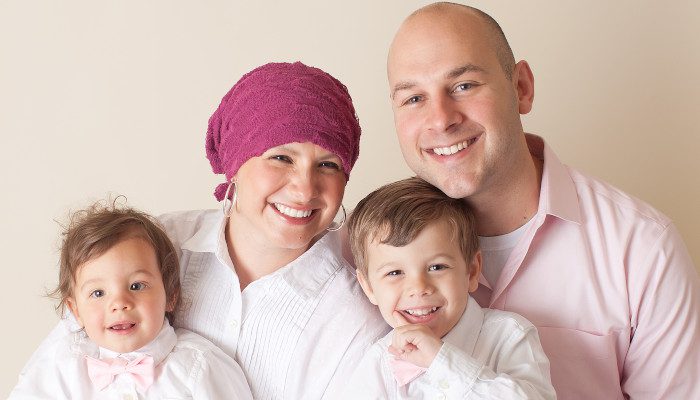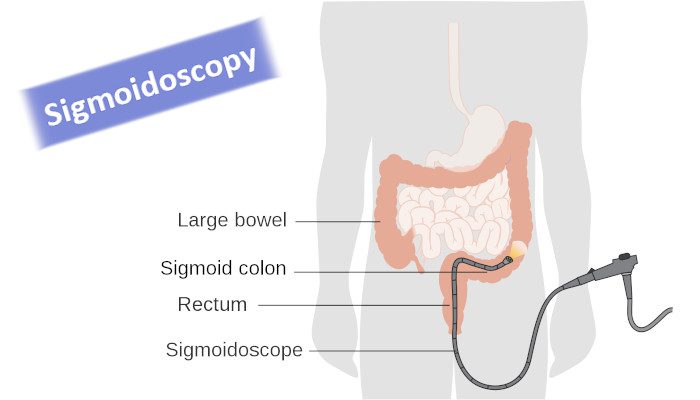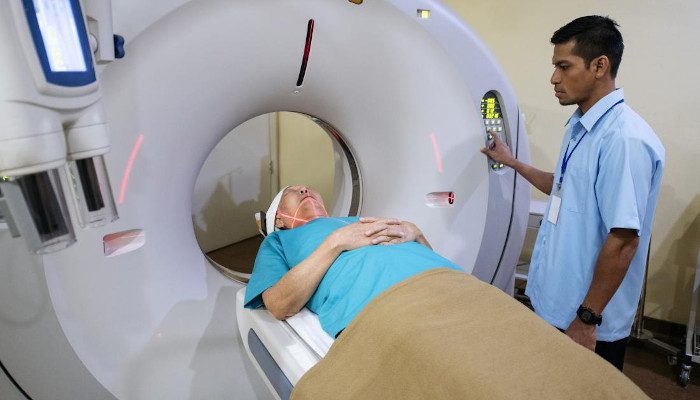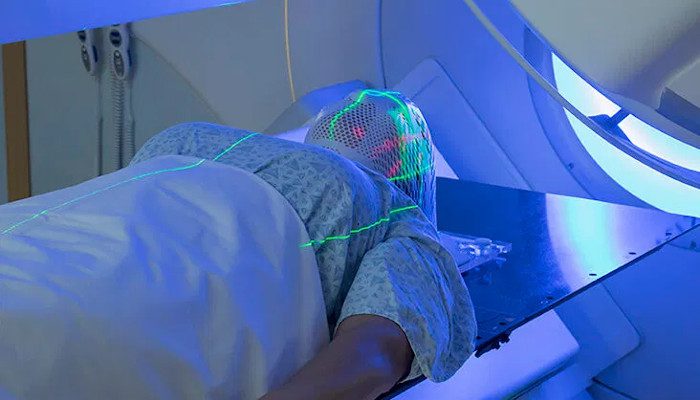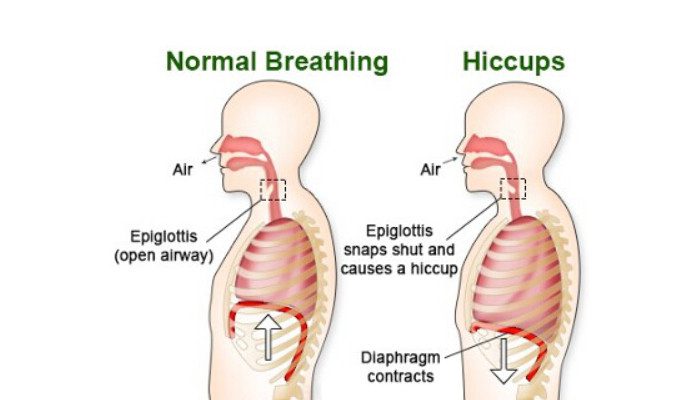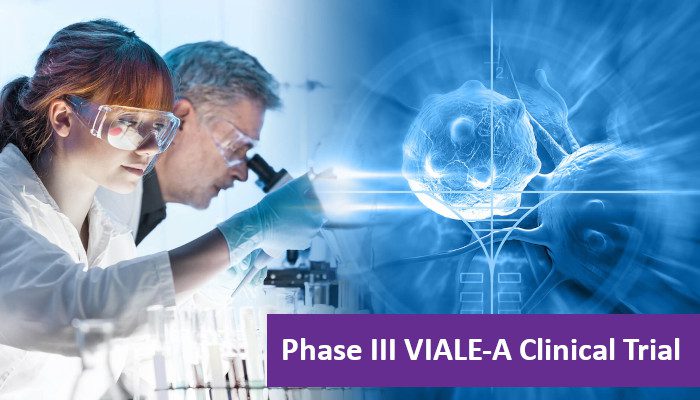It takes a few tries before you can overcome smoking addiction. You need to distract yourself from the cravings to quit smoking.
Abstaining from cigarettes and other tobacco products is hard. But it is the right step towards a healthy life.
You may notice your heart rate become normal just twenty minutes after quitting. It reduces the risk of cardiovascular disease, lung cancer and chronic obstructive pulmonary disease.
Many smokers are aware of the health risks but are unable to quit. They get strong urges when they try to quit, due to which they tend to relapse. But you can overcome the hold these cravings have on you.
Schedule Quit Day
Some preparation before quitting can be helpful. Decide when to quit, preferably within the next few weeks. You can either reduce your intake until the quit day or continue as you do before going cold turkey.
Clean Up
You need to remove smells and sights that remind you of smoking from your home and car. Dispose of cigarettes, ashtrays and lighters. Wash your clothes, carpets, etc. and use air fresheners.
Consider Nicotine Replacement Therapy
Nicotine replacement therapy can help you resist cravings. Your doctor may recommend:
- Nasal sprayer or inhaler with prescription nicotine
- OTC nicotine patches, lozenges or gum
- Prescription medicines without nicotine like bupropion and varenicline.
Take Help
Inform your family and other close ones about your decision to quit smoking. People who have successfully quit can be helpful. Request other smokers to not smoke near you.
You can sign up at a support group. Many groups offer free counselling and nicotine patches.
Resist
Resist the temptation to have just one drag. The temptation usually passes after ten minutes. Distract yourself through other activities like chewing gum, exercising, etc.
Identify Triggers
Your urge to smoke might be the strongest during some situations. Identify and plan how to deal with them.
For example, if you light a cigarette when drinking alcohol, cut your intake. If it happens when you talk on the phone, doodle with a pen to keep your hand busy during the call.
Unwind
Stress is one of the most common triggers of smoking. Avoiding stressful situations can reduce urges considerably.
Try relaxation techniques like yoga and tai chi. Exercise to blow some steam, make time for your hobby or get massage therapy.
Become Active
Physical activity is effective at distracting you from the temptation to smoke. It doesn’t have to be intense. Even short bursts like running on the stairs or taking a walk can help.
Think Of Your Motivation
Different people have different reasons for wanting to quit tobacco products. These may include:
- Wanting a healthier lifestyle
- Wanting to live long
- Protecting loved ones from secondhand smoke
- Trying to set a good example for children
Remind yourself of your reason and motivate yourself to overcome the temptation to light a cig.
Try Again
Quitting smoking is harder than it sounds, so it’s understandable if you give in to your craving. Many people need multiple tries before they quit completely. So, don’t get discouraged by it.
Think about what triggered you to take a drag and plan for how to avoid it for your next try.
The signs you should be wary of
No more than 29% of people survive pancreatic cancer for more than a year post an interventional procedure that is required in its advanced stage. This clearly makes timely detection and intervention all the more important. It is, therefore, necessary to be aware of this medical condition and the availability of treatment options.
Understanding the Clinical Aspects of the Disease
The pancreas is a delicate organ divided into three main parts and it produces the digestive juices that flow into the digestive tract; these juices help with the digestion of partially digested food by the stomach. The body and the tail of the pancreas produce insulin which plays a major role in controlling blood sugar. The pancreas is clearly quintessential for the digestion and absorption of food in our bodies.
The disease has no known causes, and this is what makes detection even more critical, while scientists try to find the root causes but to date have been unable to pinpoint the same. Some potentially attributable causes like lifestyle choices like smoking, drinking, high BMI among others can potentially trigger as well as increase odds of developing pancreatic cancer. The main reason behind most cases of pancreatic cancer is detected late is because of the location of the organ itself, according to oncologists here at Delhi’s best pancreas cancer hospital. Since it is located located in the posterior part of the body, nascent tumors don’t show up nor do other symptoms. It is only by the time the tumor starts spreading simultaneously affecting other organs that patients begin to realize or exhibit any symptoms. Some of the rather commonly observed signs of pancreatic cancer are the late and unforeseen onset of diabetes around 50years of age, jaundice, sudden weight loss, itching on the skin to name a few.
Beginning with yellowing skin, the tumor at the head of the pancreas affects the exocrine function which causes digestive failure in the process. Some patients may also report a sudden new-onset of diabetes if the tumor starts off toward the tail of the pancreas. About 95% of all cancerous (malignant) tumors in the pancreas, the abnormality formed in the head which (due to its closeness with the intestine) also affects the functioning of the small intestine. Patients may experience itchiness all over their bodies due to the deposit of bile salt crystals under the skin.
As cancer is a silent killer but extremely potent and lethal, it’s time to rely on advanced technological treatment options to better manage the patient outcomes and we offer the best treatment for pancreatic cancer in south Delhi, using the latest technologies available with the best chances of success offered as well.
South Delhi’s best doctors for cervical cancer explain.
A from of cancer that affects the cells of the cervix (the lower part of the uterus) is known as cervical cancer. This particular cancer is caused by a human borne virus called the human papillomavirus (HPV), and is generally transmitted via sexual contact.
The body’s immune naturally prevents the HPV from causing major harm to the body. However, HPV can survive for years, and gradually over time in some women, it can turn the cells of the cervix into cancerous ones. Cervical cancer makes up a large number of the total cancer cases found in Indian women.
Here are a few things should to know about cervical cancer in India.
It is reportedly the second most common cancer found to afflict Indian Women
Cervical cancer accounts for around 16.5% of the all-cancer cases among Indian women and is the second most prevalent form of cancer in the same with breast cancer being the most prevalent. Studies suggest about 160 million women in India between the ages of 30 and 60 are at higher risk of developing this cancer with close to one lakh new cases registered in 2018 alone.
As south Delhi’s best hospital for cervical cancer, we urge you to get check-ups regularly.
For Indian Women with cervical cancer, the diagnosis comes too late
Studies have shown countries with an historically low socio-demographic index (SDI) invariably have a higher mortality rate for women afflicted with this cancer, and late diagnosis is unfortunately still reality
There are a number of factors behind women being diagnosed late.
- In India it is usually the case that most people get treatment after their cancer reaches relatively advanced stages; this includes women and makes treatment harder and lessens chances of recovery.
- Those who manage to get to a doctor on time, find treatment restrictively or not available at all; and the options can be disarmingly expensive.
- Unlike women in the developed parts of the word who are enrolled via government into regulatory screening programmes that detect cervical cancer among others rather early; women in India and the subcontinent in fact, do not have similar access to or inclination for such screening programmes with stigma or shame around exposing the body’s sensitive parts in India playing a massive role.
South Delhi’s best doctors for breast cancer explain.
Breast cancer is the most prevalent cancer that afflicts women and makeup up almost 14% of all reported cancer in Indian women. Some statistics suggest that an Indian woman is diagnosed with breast cancer around every four minutes in India, these are figures based on diagnosis only, not unreported or undetected cases. Cases of breast cancer have been rising in both urban and rural India with a report in 2018 on Breast Cancer statistics reported 1,62,468 new cases and 87,090 deaths from the same. Even the best cancer hospital in south Delhi can
Cancer is highly curable if detected early, and but survival becomes harder and harder in the advanced stages and even the best breast cancer hospital in south Delhi cannot help after highly advanced stages. It is staggering to learn that more than 50% of all breast cancer cases in Indian women are stage 3 and 4 cases. Post this, survival for women is around 60% for Indian women, as compared to 80% in bc North America.
Women can be aware of symptoms and identity the symptoms if they occur like the formation of lumps that might in fact be cancerous in nature. The obvious reason for lower survival rates for Indian women is lack of awareness, no culture of regular checkups which is translated into low early screening and diagnoses numbers.
Kerala reports the highest number of cancer cases in India while others like Mizoram, Haryana, Delhi and Karnataka also report high number of cases.
Indian women in between the ages of 30-50 are at most risk of developing this type of cancer, and with age the risk increases till it is highest by 50-65 years. One out of twenty-eight Indian women is likely to develop this type of cancer during her lifetime and It is more (1 in 22) for urban women than for rural women (1 in 60). Another report indicated that cancer caused 5% of the total disability-adjusted life years amongst the Indian population in 2016.
Knowing the symptoms will help with early detection which will help fights cancer.
Tips for coping up with stressful times for cancer survivors
Feeling stressed? You are not alone!
Stress and anxiety are common once anyone is diagnosed with cancer. The feeling of hopelessness and fear always dwells heavily in people suffering from cancer.
Even when the treatment ends, the patients are still unable to recover from the trauma they once had and worry about the reoccurring of the disease, thereby oftentimes the constant struggle and anxiety leads to an unhealthy lifestyle.
Finding that you have cancer is an emotional and difficult journey and after the cancer diagnosis, people generally feel stressed, depressed and afraid. It’s a struggle for them to cope during these difficult times. Which is completely understandable as the disease is deadly and demands a lot of strength, courage and determination to fight against it.
Here are some life-changing tips for cancer survivors and advice from doctors and other survivors who once had the same experience as you are having now:
1. Accept your condition and try to control your fear
Fear of recurrence or coming back of the disease is the root cause of your entire problem including stress, anxiety and feeling of hopelessness. It is the most common emotional strain that each cancer patient goes through even after the completion of their treatment.
This fear always comes in the way of happiness and leading a healthy life. Accordingly. it is necessary to overcome this fear because nothing good would ever come out of it. It will only add to your problems and worries and worsen the situation even more.
So, don’t be so hard on yourself, you have already witnessed a massive challenge and even overpowered it. So you need to realise that you can get through this problem as well if you try a little hard and acknowledge yourself.
2. Seek support and don’t isolate yourself
Going through cancer is a difficult time and people often tend to isolate themself which eventually results in depression and anxiety. There are a lot of tools and help that are available to deal with the cancer survivors going through these hardships.
If you feel that you are not receiving enough care and treatment then voice out your concern. Let the others know that you are looking for support, care and companionship. There are a lot of people who care about you and your wellbeing, and you are immensely important to them. Keep that in mind that there are people who care and love you and they will continue to do so. Even after the treatment ends, don’t feel guilty/embarrassed to ask for help.
3. Stay connected to your family, and your loved ones
A cancer diagnosis affects the entire family and burdens them with stress, especially to the primary caretakers. It’s not just you who struggle and experience hardship, your family has also gone through it. Staying in touch with your family, friends and your loved ones who love, care and have faith in you is important.
If you can’t talk to them personally, then stay connected via Whatsapp, video chat, calls and other devices because these are the people who care about you. So, don’t feel ashamed or guilty to ask for help and be grateful to them. Together we can move mountains.
4. Express yourself, share your thoughts and fear
Conversation among your family and friends is understated but proves to be greatly beneficial for our mental health. Don’t hesitate or feel guilty about expressing and sharing your thoughts and fears. You can also perform other helpful activities like writing a journal, diary or blog to release stress and expressing your feelings.
If you don’t feel like writing then you can paint, draw, create crafts and other activities. You can also talk to other cancer survivors because they’ve also gone through the same difficulties as you. Sharing the same thoughts and hurdles can help you open up and help in understanding the situation you’re in currently.
5. Practice yoga and meditation
Yoga and meditation have a huge impact on your mind and body. Practising meditation and yoga helps to release stress and anxiety and reduce the risk of you having any other diseases. Regular practice of yoga and meditation boosts your mental health, increases attention and concentration and puts your mind at ease.
The correct time to do yoga and meditation is in the morning or early morning for at least 20 min per day. You should do meditation after practising yoga as it will calm and relax your whole body. The best yoga poses for enhancing your mental health are the following:
- The eagle pose
- The high lunge pose
- The tree pose
6. Maintain a healthy and normal lifestyle
Try to remain healthy and happier as possible. You know we want the best for you. Take your time to adjust with your daily life activities and work on your goal, priorities and lead a normal life. This can help in boosting your energy level and keeps you engaged so that negative thoughts do not cross your mind.
Eat diets full of green veggies and fruits to keep your body healthy and refreshing. Avoid Bad habits such as smoking, drinking alcohol, skipping your meals and keep yourself physically and mentally fit.
7. Get enough sleep
Lacking a considerable amount of sleep can lead to poor mental health. Enough sleep can overcome stress, lower the risk of other diseases and enhance your mood. Have a fixed bedtime and waking uptime. According to numerous studies, one should get 7-8 hours of sleep which allow the body to function properly.
8.Listen to your body & stay connected with your health provider
Monitor and take care of your body and don’t ignore any symptoms. Don’t hesitate to reach out to your caretaker if you have questions regarding your health and body. If you feel something isn’t right or when you notice something abnormal, contact your doctor right away. Keep your doctor daily updated about your physical and mental health.
Book an appointment with the Best Cancer Specialist at Oncoplus Hospital.
What is colorectal cancer?
Colorectal cancer is the cancer of the colon, that is, in the large intestine or rectum. Both of these organs are a part of your lower part of your digestive system. The rectum is at the end of the colon. Colorectal cancer is deadly for both men and women and it is estimated that about 2 in 24 men and 3 in 24 women will develop colorectal cancer during their lifetime, making this second cancerous disease for both men and women.
The colorectal disease is usually caused by the development of polyps, which are small masses of cells in the rectum or colon. However, these growths start as benign or noncancerous but they can develop into malignant or cancerous tumours over time.
Colon cancer has 4 stages and this disease usually develops without showing any symptoms at all, until the disease has become worse or reached later stages.
The symptoms of colorectal cancer include
- Pain in the Abdominal
- Bleeding In the rectum
- Changes in bowel habits (constipation, diarrhoea or thinner stool)
- Decrease in appetite
- tiredness or fatigue
- Unexplained weight loss
Seek immediate medical help if you experience any of the above mentioned symptoms.
There are multiple options for colorectal cancer screening
The patients with symptoms are usually recommended the following tests for colorectal cancer screening:
Colonoscopy
A colonoscopy or coloscopy is a screening test used to detect changes or abnormalities in the large intestine (colon) and rectum. During a colonoscopy, a long, flexible tube called a colonoscope is inserted into the rectum. A tiny video camera is fitted at the tip of the tube allowing the doctor to view the inside of the entire colon. A colonoscopy allows the doctor to look inside the entire rectum and colon while the patient is put under a sedative.
If polyps are found, they are removed during the exam and sent to a lab for further examination. This is considered the gold standard for colon cancer. The exam usually completes in about 30 minutes and requires a full colon cleansing on the day before the test is done. With normal results, a colonoscopy is repeated every 10 years. The test may be repeated more often if a polyp is found or additional frequent testing is needed if the patients have a family history of this disease or any other cancer. Your doctor would recommend the screening based on your conditions.
Sigmoidoscopy
Like a colonoscopy, Sigmoidoscopy is also a procedure that lets your doctor look inside your sigmoid colon by using a flexible tube with a light on it. It helps your doctor check for ulcers, abnormal cells, and polyp.
It takes only 15-20 minutes to finish and requires a full colon cleansing on the day before the test is required. Sigmoidoscopy is a very less invasive medical examination of the large intestine from the rectum through the nearest part of the colon, the sigmoid colon.
If any evidence of cancer is found, usually, a colonoscopy is recommended so that the physician can look at the entire colon for signs of disease. It is repeated every 5 years. Sigmoidoscopy has fewer side effects and requires less bowel preparation, and poses a lower risk of bowel perforation (an uncommon event, when the screening instrument pokes a hole in the intestine) than colonoscopy.
At-home screening
These tests can be done in the privacy of your home to detect irregularities in your stool. Pass the test kit to your health care provider to get the samples checked for the presence of blood or cancer cells. If evidence of blood or cancer cells is found, further testing includes a must colonoscopy. While the other procedure includes:
- Faecal Immunochemical Test (FIT): FIT tests use antibodies to detect blood in the stool.
- DNA Stool Test (i.e. Cologuard): This at-home test detects haemoglobin (proteins in the blood) in stool samples and can also detect certain DNA mutations in the cells shed by advanced adenomas as stool moves via the large intestine and rectum.
- High Sensitivity Fecal Occult Blood Test (FOBT): The FOBT is one of the most common tests used to screen for colon cancer by checking for blood in the stool.
Colorectal cancer is often preventable
Colorectal cancer usually develops from precancerous polyps or abnormal growths in the colon or rectum and can be removed without surgery.
Colonoscopy should be your final choice
There are various ways to get screened for colorectal cancer like Sigmoidoscopy, at-home stool testing, etc, and each of these has their advantages. Colon cancer screening does not always require a colonoscopy. Stool-based tests are non-invasive procedure options and don’t require prep work and usually finishes within 15 minutes.
Many tests like the DNA Stool Test(i.e. Cologuard), Fecal Immunochemical Test (FIT) etc can be done at home, with specimens sent into a central laboratory and provide an analysis of DNA for cancerous cells. If any of these screens come up as positive, it is important to have an optical colonoscopy as a final diagnostic step.
Recommendation for colon screening usually starts at age of 50 and some people need more frequent or early testing.
The normal colon takes almost 10 years to become cancerous and it usually starts in people ’50s.
You may need to be screened earlier or often if you or a close relative or family member have had colorectal polyps or colorectal cancer or if you have a genetic syndrome.
Colorectal screening may look different for everyone
All of our body is different and the experience may vary over the patient. Talk to your doctor about your screening schedule based on the risk factors and initial screening results. There’s handful of colorectal screening tests designed for different cases of colon cancer. And your screening type would only be best decided by your physician.
Book an appointment with the Best Cancer Specialist at Oncoplus Hospital.
What is breast cancer in men and breast cancer symptoms?
Breast cancer in men is a rare type of cancer that develops in the breast tissue of a man. Cancer in the breast is commonly referred to as a disease that mainly targets women, but it does occur in men. Men also have breast tissue like women, which can develop into breast cancer as cells in almost any part of the body can become malignant and may spread into other areas. Cancer occurring in men is a rare case because it is related to the cells, glands or parts that store or produce milk. The chances of arising tumour cells in the breast in a man in his whole life are 1 out of 900.
Cancer in men is most commonly found in older men around the age of 50 to 60, though it can occur at any age. Men don’t realise that breast cancer can happen to them also, due to this reason cancer in men is not diagnosed at the right time until it becomes severe or reaches its later stage.
What are the symptoms of breast cancer in men?
The following include the signs and symptoms for breast cancer, if you experience any of these, at any age make sure to contact and get checked out by the doctor.:
- A pain-free lump or thickening of the skin in or around the breast/underarm.
- Changes in the shape or size of the breast or chest area
- Changes in the skin of your breasts such as dimpling, puckering and redness
- Changes in your nipples like scaling, redness or swelling in any part of the breast
- Nipple when it starts to invert or turn inward
- Discharge/leakage of blood or fluid from the nipple
How does breast cancer develop in men?
The cause of breast cancer in men and women are similar. The breast of a man is similar to a girl’s breast before adolescence. During adolescence, women tend to produce more breast tissue along with fat but men naturally don’t.
Cancer always starts at the cellular level. Ordinarily, new and healthy cells are generated to replace the old ones. But due to disruption in the DNA as new cells are made, sometimes the cells grow out of control and begin to grow new cells abnormally which results in the formation of tumours, these can be either benign(non-cancerous) or malignant ( cancerous).
What are the risk factors of breast cancer?
The following are the risk factors of developing breast cancer in men. A risk factor that we all can control and protect ourselves.
- Being overWeight: Being overweight is a common risk factor for developing breast cancer. One of the main sources of estrogen in the body is fat tissue. Having more fat tissue means having a high level of estrogen in the body which ultimately leads to a higher risk of breast cancer.
- Diet: One should eat a healthy and more fat-free diet to prevent breast cancer as our diet and daily consumings is directly associated with the amount of fat in the body.
- Alcohol consumption: Latest research and studies have stated that a woman is at a higher risk for breast cancer if the alcohol consumption in the body is high.
- Exposure to estrogen: If you take drugs related to estrogen then you are likely to get breast cancer or you are at risk.
The risk factor you can’t control
- Older age: The main risk factor of getting breast cancer being a male is being old aged. Most breast cancers are found in men with an age 50 or older.
- Genetic mutations: Inherited changes or mutation to certain genes like BRCA1 and BRCA2, men with these changes in the genes have a high chance of getting breast cancer.
- Personal or family history of breast cancer: If you have already been diagnosed with breast cancer then, you are most likely to get it again either in the same breast or the other one or if your family members like mother, father, siblings (first-degree relative) have a link with breast cancer then you can have it.
- Liver disease: Having disease related to the liver such as hepatic cirrhosis or Klinefelter syndrome (having two X chromosomes rather than one) which increases the female hormone-like estrogen in the body.
- Radiation therapy: Having radiation therapy of the chest or around in childhood or adulthood can increase the chances of having this disease.
How is breast cancer in men diagnosed?
If your doctor has certain reasons to suspect for cancer, the following test and procedure you can follow:
- Clinical breast exam: Clinical breast exam is a physical exam done by the doctor or your healthcare provider. During a clinical breast exam, the doctor checks and feels the appearances of your breast for any lump or look at the differences in the size or shape of your breasts. They use his/her fingertip to examine it.
- Imaging tests: Next your doctor may order tests such as molecular breast imaging that uses radioactive tracers and a special camera to find cancer, mammography uses X-ray technology to produce the images of the breast. The images created are called mammograms. Occasionally, magnetic resonance imaging (MRI) and sonograms are also used.
- Breast biopsy: It is usually done when something suspicious is caught on any of the imaging tests. The procedure involves a minute part of the breast tissue to be sent to the pathological labs to determine whether it is malignant or benign. It is the most ultimate way to be diagnosed .
- Immunohistochemistry: It is a staining process that is performed on the breast tissue in order to ensure whether the cancer cells contain HER2 receptors and/or hormonal receptors( such as estrogen and progesterone) or not, Because if it does then the patient can be treated with medications that inhibit the level of estrogen and progesterone.
Breast cancer has five stages i.e from 0 to IV, stage 0 is invasive cancer which indicates that the abnormal cells are present but have not spread in the surrounding and stage IV is metastatic cancer which determines that cancer has spread in the surrounding and even the other parts of the body.
Once you are diagnosed with breast cancer, then your doctor will help to determine the stage of cancer on which you are and treatment will be suggested according to the stage of the disease.
These tests and procedures are used to stage breast cancer :
- Body scan or CT scan: Full body scans are imaging tests that take pictures of your whole body and help to scan cancer, their stages and other diseases early.
- Bone scan: It is an imaging test that safely scans the bones of your body by using a radioactive drug, radiopharmaceutical and is an efficient tool for finding cancer that has spread or about to spread in the bone. It can also help to determine how well is your working for cancer in the bones.
- Positron emission tomography (PET) scan:
It is an imaging procedure that uses radioactive substances such as radiotracers to visualise and check the changes taking place on metabolic processes or other activities like blood flow, absorption and regional chemical composition.
Treatments for men with breast cancer
In order to receive the appropriate treatments and medications, you must measure your cancer stage, overall health and preferences. Treatment for men and women are generally the same. Breast cancer treatments often include surgery and other types of therapies and medication, if needed.
Surgery:
The surgeries are of two types
The first one is a mastectomy, in which your whole breast is removed including the areola and the nipples.
While the second one sentinel lymph node biopsy. This type of surgery involves analysing and removal of only the lymph nodes and tumour cells.
Radiation therapy or radiotherapy:
If your cancer is not treated or few cancerous cells are remaining even after the surgery, then this therapy will be your major treatment. Radiation therapy uses a beam of intense energy like X-ray and protons to kill the cancer cells.
Chemotherapy:
This uses medication to cure cancer by the vein in your arm or pill form or it can be both.
Book an appointment with the Best Cancer Specialist at Oncoplus Hospital.
Breast cancer is a cancer type that develops from breast cells. It emerges from the inner lining of the milk ducts or the lobules that render them with milk. The growth of the malignant tumor can spread to other body parts. The vast majority of breast cancer mostly occurs among females. It should be noted that the majority of cases of breast cancer examined until now are because of iodine absence in the breast cells. For females, about 20% of iodine is required and 70% in the thyroid, and the remaining 5% for the rest of the body.
When we talk about the importance of iodine in females, devouring a lot of salt isn’t the right step. As iodized salt is practically the world’s long source of plentiful iodine. When the iodine level reduces, the iodine receptors are blocked by an increased rate of fluoride, chlorine, and bromides present in the water, food, and the environment, resulting in breast cancer.
How effective is molecular iodine for breast cancer?
According to a recent study, researchers have found that molecular iodine determines how it helps to protect women from fibrocystic breast condition, and it’s proven how it attacks breast cancer. Historically, several studies have suggested iodine supplementation to improve breast health, but none of them focused on how it works on FBC cells. Researchers are working their way to recognize the specific MOA that made molecular iodine effective.
The preclinical investigations have proven the MOA and the medical community a reason to revisit the historic research for hints on utilizing molecular iodine to cure and protect women.
What was the two different research?
Researchers conducted in vitro studies to observe the biochemical interaction on how the molecular iodine affects breast cancer cells and the cells from the fibrocystic breast tissue. Using an MCF10A, a human immortalized mammary epithelial cell line from the fibrocystic breast tissues of a 36-year-old female caucasian, the FBC study used molecular iodine at multiple doses and the growth or the production of the cells were measured. This followed by a gene expression analysis of major valid markers, that are accountable for cell growth and cell death. In this study also, primary human mammary epithelial cells were used from a healthy female donor.
This breast cancer study used the two most common breast cancer subtypes, using fixed breast cancer lines, MCF7 (luminal A subtype) and MDA-MB231 (triple-negative subtype). All of these cells were treated with molecular iodine at different concentrations to calculate the growth of the cells and their death. This is later followed by gene expression analysis of major valid molecular markers, that are primarily accountable for cell growth and death. Primary human mammary epithelial cells were utilized from a healthy female donor.
What are the results of Iodine effects on breast cancer?
The results from both of these studies indicate that molecular iodine has significant inhibitory effects on cell growth in both breast cancer and FBC. The new research results also showcase a rapid increase in cell death in breast cancer lines utilized in the study and from the cells of fibrocystic breast tissue.
In the FBC study, gene expression analysis using a quantitative RT-PCR established that cell cycle genes controlling the G1-S phase transition were up-regulated ( meaning an increase in the number of cellular components, such as RNA or protein).
There were so noticeable changes in Cyclin B expression levels that, again, indicated that cells were arrested before entry into cell division. The expression of nuclear hormone receptors PPAR-α and PPAR-γ was up-regulated. The BCL-2, inhibitor of cell death was more, while expression of caspase-3 was reduced, therefore indicating molecular iodine do incite cell death by activating caspase – a cysteine protease that plays a vital role in independent apoptosis.
While in the breast cancer cell line study, gene expression analysis using a quantitative RT-PCR also established that cell cycle genes controlling G1-S phase transition were majorly up-regulated. There were no changes noticed in Cyclin B expression levels, which further suggests that cells were arrested before entry into cell division.
Upregulation is seen in BLC-2, PPAR-α, and PPAR-γ with down-regulation of caspase-3 indicating molecular iodine causes cell death by activating the caspase-independent apoptosis pathway. The mesenchymal-epithelial transition or MET occurrence are recognized by molecular iodine treatment as shown by a sharp increase of GATA3 and E-cadherin and major down-regulation of vimentin in invasive MDA-MB231 cells.
The preclinical research allowed the researcher to under the mechanism that controls the tumor cells’ growth and showcases the significant cellular effects of molecular iodine on breast cancer cell lines. The results indicate a promising effect of molecular iodine on regulating breast cancer EMT differentiation program required for tumor initiation and metastasis.
More studies are to determine the possible impact of molecular iodine in the breast cancer subtypes using the in vitro 3D models. In conclusion, the preclinical data results suggest that administration of molecular iodine must improve the traditional therapies for the treatment of breast cancer and FBC.
The Takeaway
Although the use of iodine supplementation has long been used and recognized in clinics across the world, the treatment effects haven’t been successful. It’s mostly because of iodine supplements being either unstable or containing iodine salts, both of which have been said to be ineffective and contain severe harmful side effects.
Only molecular iodine is significantly effective in improving breast health consistently. Using molecular iodine regularly has shown to decrease the sensitivity of breast cells to the proliferative effects of estrogen, resulting in the normalization of breast tissue.
The complication or challenge with molecular iodine is its instability and oxidizing abilities, which prove ineffective to be useful for breast health. At present, we’ve only one formula of I2 that target breast cell is commercially available to all. It is made up of iodide and iodate salts that when exposed to gastric pH react to form molecular iodine.
FAQS on Molecular Iodine and Breast Cancer
Can iodine kill cancer cells?
To a certain extent, it can cause metastasis. Radioactive iodine, however, is an effective cancer treatment type effective for cancer of the thyroid gland. It’s effective as the radioactive iodine from the drink or capsule is soaked into your body and picked up by the thyroid cancer cells, even if it’s spread all across the body. The radiation causes the death of many cancer cells.
Does iodine help with cancer?
Yes! Iodine is required in the body for producing hydrochloric acid (HCL) and reducing HCL acids has been indicated in the development of these cancers. Iodine causes apoptosis (cancer cell death), removal of precancerous and virus-infected cells.
Can too much iodine cause cancer?
Yes, too much iodine can be harmful to the body. Taking high levels of iodine can lead to similar symptoms of iodine deficiency, including goiter (an enlarged thyroid gland). Increased levels of iodine intake can cause thyroid inflammation and thyroid cancer.
What are the symptoms of low iodine levels?
Here are some of the most common symptoms of iodine levels:
- dry skin
- puffy face
- muscle weakness
- increased sensitivity to cold
- constipation
- elevated blood cholesterol levels
- fatigue
- weight gain
Does iodine reduce breast cysts?
After a review of clinical studies, it’s been found that iodine replacement therapy, mostly for people with low levels of iodine, might enhance the tenderness associated with fibrocystic breast tissue. Women who taken iodine have met with very few side effects.
Book an appointment with the Best Cancer Specialist at Oncoplus Hospital.
Hiccups are an unexpectedly common symptom seen in patients having cancer, whether during cancer treatment or in the palliative care setting. Hiiccups causes these sounds due by involuntary clonic spasms of the diaphragm and intercostal muscles due to sudden closure of the glottis. In most cases, they are annoying and usually stop within a few minutes. However, some patients may experience continuing periods of greater than 24-48 hours, these are persistent/chronic/intractable hiccups that last more than 2 months, and up to 10% of the patients having advanced cancer deal with it. These are more common in men compared to women.
Effects of prolonged hiccups on the patient having cancer
Prolonged or persistent may have undesirable effects. These may include:
- fatigue/tiredness
- Reduction in fluid and food intake
- Emotional anxiety and distress
- Lack of sleep
- Irritation
- Deduction in cognitive function
- Problems in aspiration
- Weight loss
- Diminish the quality of life
- For a mesothelioma patient, hiccups can be painful.
Plausible causes of persistent hiccups
- Many conditions are thought to be the cause of this problem including low levels of calcium, sodium, and potassium, alcohol intake, sudden strokes, head injuries, and many more but the exact cause is still not verified.
- Many doctors say that this can also be due to the intake of medications as many of them are used in the treatment and also during chemotherapy. Of these medications.
- It is said that the most frequent cause of prolonged/experienced hiccups is dexamethasone.
- Definite chemotherapy drugs used during the treatment – In people with cancer sometimes, these drugs might cause side effects.
- Changes in temperature
- Other drugs, including anti-nausea medicines, steroids, and antibiotics.
- Nerve and minor brain injuries.
- If your kidneys are not functioning properly
- The cancer is pressuring your diaphragm
Treatments for mild hiccups
There are no medical treatments for treating hiccups as these are temporary and get away easily without treatment. Many old and home remedies for hiccups are said to be efficient but may not work on the patient having persistent hiccups, these remedies include:
- Holding the breath
- Gargling
- Acupuncture
- Rubbing the pharynx with cotton
- Breathing into a paper bag
- Biting a lemon
- Digital rectal massage
- Taking a deep breath and holding it for a few second and then reeling it slowly may also help
Treatments for persistent hiccups
Other treatments include Chlorpromazine, Chlorpromazine is a dimethylamine derivative of phenothiazine. It acts peripherally by dopamine antagonism in the hypothalamus. It is the only medication approved for the treatment of hiccups by the US Food and Drug Administration, and for many years it has been in use.
Unfortunately, it doesn’t apply to everyone and has adverse reactions like confusion, hypotension, tiredness, nausea, urinary retention, and excessive sleep even in a single dose.
Baclofen is also an effective drug for people suffering from persistent hiccups and has initiation of baclofen resulted in the proper resolution of hiccups in 6 out of 10 patients and showed remarkable improvement in 2 patients. It is suggested to take an amount of 5gm-20gm of baclofen, three times a day.
Gabapentin is also a medication that has shown significant improvement and the hiccups were relieved by oral gabapentin. Baclofen is a gamma-aminobutyric acid (GABA) analog that activates an inhibitory neurotransmitter is thought to help in blocking the hiccup stimulus. It is recommended to take 100 mg of gabapentin three to four times a day.
Nifedipine, a calcium channel blocker, may play a role in reversing the abnormal depolarization in the hiccup reflex arc.1 It has been reported to put an end to persistent hiccups but tends to induce hypotension, which may be especially severe in volume contracted patients or those receiving opioids. A daily dose of 30 to 60 mg of this drug had a significant effect on patients’ hiccups and even stopped the hiccups in 24 hours.
FAQS on Hiccups in Cancer Patients?
What helps hiccups in cancer patients?
Your doctors would be the best expert to help treat the hiccups directly based on your condition. The most common medication for treating hiccups in cancer patients would be the anti-sickness drug metoclopramide (Maxolon) or a sedative such as haloperidol or chlorpromazine.
What causes hiccups in cancer patients?
Hiccups occur mostly due to irritation of the nerve that controls the diaphragm which can have different reasons behind it. Those might be due to a certain chemotherapy drug used for treating cancer. Other medications that can or cannot be used for cancer-related problems, such as steroids, antibiotics, or anti-nausea medicines.
Which medicine is best for hiccups?
Medications that are effective in treating long-term hiccups are the following:
- Baclofen
- Metoclopramide
- Chlorpromazine
Can hiccups be a side effect of chemo?
Hiccups are one of the side effects of chemotherapy. Intractable hiccups severely affect a person’s resting and eating habits while reducing their quality of life.
What to take to stop hiccups?
Here are some effective tips for curing hiccups-
- Drink water very quickly
- Tell someone beforehand to frighten you
- Gargle with water
- Bite on a lemon
- Pull hard on your tongue
- Use smelling salts
What drug causes hiccups?
Here are some of the most common drugs that set our triggering hiccups:
- Barbiturates (methohexital)
- Antibiotics (azithromycin)
- Phenothiazines (perphenazine)
- Opioids (hydrocodone) Alcohol
- Benzodiazepines – midazolam, lormetazepam, and lorazepam
- Steroids – dexamethasone, methylprednisolone, oxandrolone, and progesterone
Can hiccups be a sign of something serious?
Yes, hiccups can be a sign of serious illness. Make an immediate appointment to see the doctor if your hiccups last more than 48 hours or if the hiccups turn so bothering that they can cause problems with eating, sleeping, or breathing.
Are hiccups a sign of death?
Hiccups can happen if a person nears death if they have an underlying health condition or taking a specific medication. Hiccups are a major complication of severe illness due to the effects of treatment medication.
Why does Sugar stop hiccups?
Sugar is a distraction technique that’s effective in treating hiccups, mostly mild ones. Take a spoonful of sugar and let it dissolve on your tongue or tickle the roof of your mouth with a Q-tip or stick your finger in your ears to stimulate branches of the vagus nerve. The overload on other vagus endings will get rid of hiccups.
Do hiccups go away when you sleep?
Yes! The hiccups have a significant tendency to fade away at sleep onset.
Book an appointment with the Best Cancer Specialist at Oncoplus Hospital.
Myeloid Leukaemia (AML) is a rare but intense type of cancer of myeloid cells (white blood cells responsible for strengthening our immune system and fighting infection). The new standard of care for acute myeloid leukaemia is being tested all around the world for effective treatment of its patients.
The latest results from the VIALE-A phase III clinical trial from this summer revealed a 34% decrease in the death risk, by cementing a drug combination that’s been tested around the work. Phase III was a large multicenter clinical trial that was created to establish whether the combination of “Venetoclax ” and “azacitidine” is superior to azacitidine alone. It was a confirmatory study for the patients diagnosed with AML that we’re unable to tolerate intensive chemotherapy.
As Courtney DiNardo, MD, MSCE, Clinical Researcher in the Department of Leukaemia explained that most of the patients with AML are over the age of 65, which is an age where standard chemotherapies are not an ideal option. It has an increasing rate of toxicity and proves less effective. The main intentions of the phases III VIALE-A trail were to have better overall survival (OS) rate. Fortunately, the study was successful in showcasing it.
The response rate was 66% high, which explained that the majority of the people responded better with the regimen of “venetoclax” and “azacitidine”. The overall survival rate improved significantly in patients that have taken this combination. Even the timing of the response, people who studied and went into remission were excessively higher.
The majority of people who received venetoclax and azacitidine together achieved a diminution of severity of AML within the first cycle of the treatment. Or it was several months faster than the prior existing standard of care.
The new medication is completely different and live-changing in the treatment of cancer, especially AML. It’s the first confirmatory, phase II study that’s evident in showing something better from the previous standard of care, from azacitidine or a low dose of chemotherapy. The new treatment has proved that the drug combination has upgraded the outcomes in both remission rates and OS.
What makes this approach of treatment better than the rest?
There’s been numerous research and study done over the past few decades to improve the outcomes of people with AML. And various other treatments have tried treating the disease but the result has been elusive. AML has remained to be the most common kind of leukaemia in the world with a 5-year survival rate of 28%.
The combination of venetoclax, a first-in-class medicine added with azacitidine showed a great deal of improvement in older patients with AML. Backed with intensive research evidence and real-time effectiveness, this approach suggested being a potent drug combination.
What’s Venetoclax and Azacitidine?
Venetoclax is effective in treating adults with chronic lymphocytic leukaemia or small lymphocytic lymphoma. This medication targets the B-cell lymphoma-2 (BCL-2) protein that prevents some blood cancer cells from dying naturally from the process of apoptosis. It selectively binds to the BCL-2 protein and hinders it from coming in contact with cancer cells, which helps to restore apoptosis.
While Azacitidine is a chemotherapy drug that functions by allowing the bone marrow to grow normal blood cells, decrease the requirement for blood transfusions and kill abnormal blood cells. It’s placed in a class of medications, known as demethylating agents that are designed to target aberrations of DNA methylation patterns linked with cancer onset and progression.
How was VIALE-A clinical trial done?
In the double-blind, placebo-controlled, phase III VIALE-A clinical trial, about 433 people who haven’t received any treatment beforehand with AML and ineligible for intensive chemotherapy were randomized to take either a combination of venetoclax (n=286) arm or azacitidine in combination with a placebo arm (n=145).
The final results expected were primarily the overall survival (OS) rate and complete remission rate along with incomplete hematologic recovery in the United States, China, Japan, the European Union, and EU countries. While the secondary results were complete remission (CR) and CR with partial hematologic recovery (CR + CRH).
According to the researchers, people assigned with venetoclax and azacitidine arm combination in the VIALE-A trial have a median survival rate of 14.7 months against 9.6 months for people with the placebo arm.
Moreover, about 66.4% of people who received venetoclax plus azacitidine achieved CR+CRi against 28.3% for the azacitidine plus placebo group.
The safety of the procedure was mostly consistent among the patients with previous studies of venetoclax and azacitidine combination. The most adverse complication of the combined medication was the following:
-
- Hematologic and gastrointestinal nature (40%)
- Thrombocytopenia (46%)
- Nausea (44%)
- Constipation (43%)
- Diarrhea (41%)
- Febrile Neutropenia (42%)
- Neutropenia (42%)
The most common and severe reactions happened with less than 10% of patients given venetoclax and azacitidine are febrile neutropenia (30%) and pneumonia (17%).
Tumour lysis syndrome (TLS) was recognized during ramp-up in three patients in the venetoclax arm, but none in the placebo arm. As we all know, TLS is a severe complication of venetoclax due to the fast breakdown of cancer cells, often causing kidney failure, death, dialysis, and death.
Complications caused in the trial, however, were temporary, biochemical changes resolved with uricosuric agents and calcium supplements without treatment interruption.
What are the complications of the venetoclax + azacitidine regimen?
The biggest problem associated with the venetoclax and azacitidine regimen is its toxicity. It’s quite concerning according to the researchers. There’s already more myelosuppression due to lower white blood cell count due to this regimen. If you have neutropenia and neutropenia-related fever, then you must inform your doctors or physicians. But the toxicity is possible to be reduced at its lowest by the physicians.
The management of patients is the key importance when given the combination of the medication. Historically, patience with azacitidine alone didn’t go into remission until the fourth or sixth cycle of therapy. So researchers didn’t do routinely early bone marrows and required no major interventions and kept the patients on cycle due to their low blood counts when they still had leukaemia.
The combination, however, is different as the vast majority of patients go into remission within the first cycle, meaning it’s important to do bone marrow in the first cycle itself. Older patients with AML often have multiple medical conditions at the same time so physicians have to modify the treatment regimen down. Instead of the standard 4 weeks, physicians spread the 21-day regimen over 5 weeks. Doctors have to stop the therapy in between and wait for a week or two for counts to recover, then modify the treatment accordingly.
Monitoring guidelines are developed as a part of the study and available to help the physicians with the management of AML patients acquiring the venetoclax and azacitidine regimen. This drug combination is an incredibly effective regimen that’s well-tolerable if the patients are appropriately managed.
What’s to look for in AML cure?
The drug has turned into becoming standard care for older patients with AML, all over the USA. The FDA has also approved the regimen use in 2018, after the phase, I study that gave impressive response rates and the possibility of improvements to overall survival (OS).
After racing the phase III VIALE-A study, the results of the drug combination, this newfound regimen has rapidly adopted the standards of care across the world. There’s still a clinical implication, not just in US citizens but globally. But, this regimen is seen as a practice-changing new therapy globally where the complications can be reduced.
This regime is still an improved standard of care that’s not the same as eliminating the disease. We still need additional research for a new standard of care for AML. This regimen is not helpful for the majority of patients with AML.
Future research sources on the identity of patients with AML that aren’t likely to respond with the combination of venetoclax and azacitidine regimen. Hopefully, it works on people with certain gene mutations that have proved to respond poorly to the regimen.
In the care of TP53 mutations (TP53 is a gene that helps to cease the tumor growth. It acts and is known as a tumor suppressor), effective TP52-treatment to azacitidine and venetoclax that responds safely is still being worked upon.
Book an appointment with the Best Cancer Specialist at Oncoplus Hospital.
